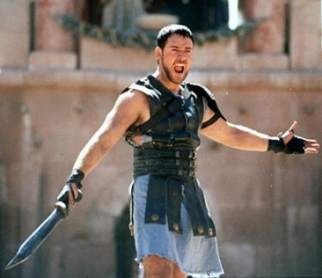What do driving and football have in common? Crashes, collisions, and injuries, of course!
That’s why the Virginia Tech-Wake Forest University Center for Injury Biomechanics enlisted the help of the Total Human Model for Safety (THUMS) software from car manufacturer Toyota.
The software was originally designed to help auto manufacturers better understand injury mechanisms in vehicle crashes so they can further improve car crash safety.

However, the re-purposed software will now help medical research teams learn how to prevent and treat head injuries, which may result in the creation of safer helmets.
“This software offers us the ability to measure and evaluate more elements of the helmet-to-helmet hit that causes the bulk of football-related concussions,” said Joel Stitzel, an associate professor of biomedical engineering and technical director of the center.
The licensed version of THUMS will feature enhanced imaging of major organs, ligaments, tendons, mussels and blood vessels – all providing medical researchers with a deeper look into the way a player’s body reacts to a hit.
One of the advantages of a THUMS model is that it “could surpass the predictive power of their steel and rubber cousins. Unlike traditional dummies, which must first be durable enough to endure the crash environment, virtual models have no such restrictions.”
The THUMBS adoption for use in football marks a growing trend in the focus on sports injuries and pain management.
As the NFL gets more intense, so do players on the college and high school levels. A prime example of this intensity is in the case of Andre Waters who died at age 44 with brain damage equivalent to that of an 85 year-old Alzheimer’s patient. His untimely death helped push more injury research in sports.

Researchers have argued that concussions when left untreated can worsen with time and have serious effects on younger brains, which makes these demographics of particular interest to researchers.
To monitor and manage sports injuries, Virginia Tech football players have had sensors in their helmets since 2003, which when hit, transmit data to a team doctor who then analyzes the impact.
The NFL also instated a mandatory recovery time in 2009 for players with concussions before they could get back into action.
Although THUMS is a model way for researchers to learn more about head injuries and help minimize their impact, people wondering are left wondering whether the sports industry is indeed using this research for safety, performance enhancement, or both.
The study of injury, pain and how the body responds is of major importance to the sports industry in general. For example, imagine a player that never has to be taken out of the game because they never feel pain.
The problem is that pain is our body’s way of telling us that there’s a problem that needs attention. Without a pain alert, players might damage or ruin their own bodies all for 20 extra minutes in a sports game and a big fat paycheck.
And we’re already doing it.
Although performance enhancing drugs like steroids are illegal within major sports leagues like the NFL and NBA, team doctors consistently inject players with pain killers and cortisone to help them push through pain and play one more game. Without a physical ability to feel pain, these players are invincible.
They’re able to play through injuries that will most certainly cause them problems later down the line because their senses are numbed by these drugs. Some medical researchers wonder if pain will eventually be dulled all together. But at what cost?

With the inability to feel pain, players can ruin their bodies without feeling it, which is certainly a major money maker for sports authorities.
There are larger implications, though.
Think gladiators who can’t feel pain and soldiers that can endure battle without feeling their wounds.
As pain and injury management comes more into the forefront, only time will tell whether researchers will be able to eliminate a body’s pain response all together.
More importantly, time will tell whether these findings will be used for the good of the patient to numb chronic pain or for the good for an industry – to push players and soldiers farther than they ever have before.
[Via Wintston-Salem Journal]







